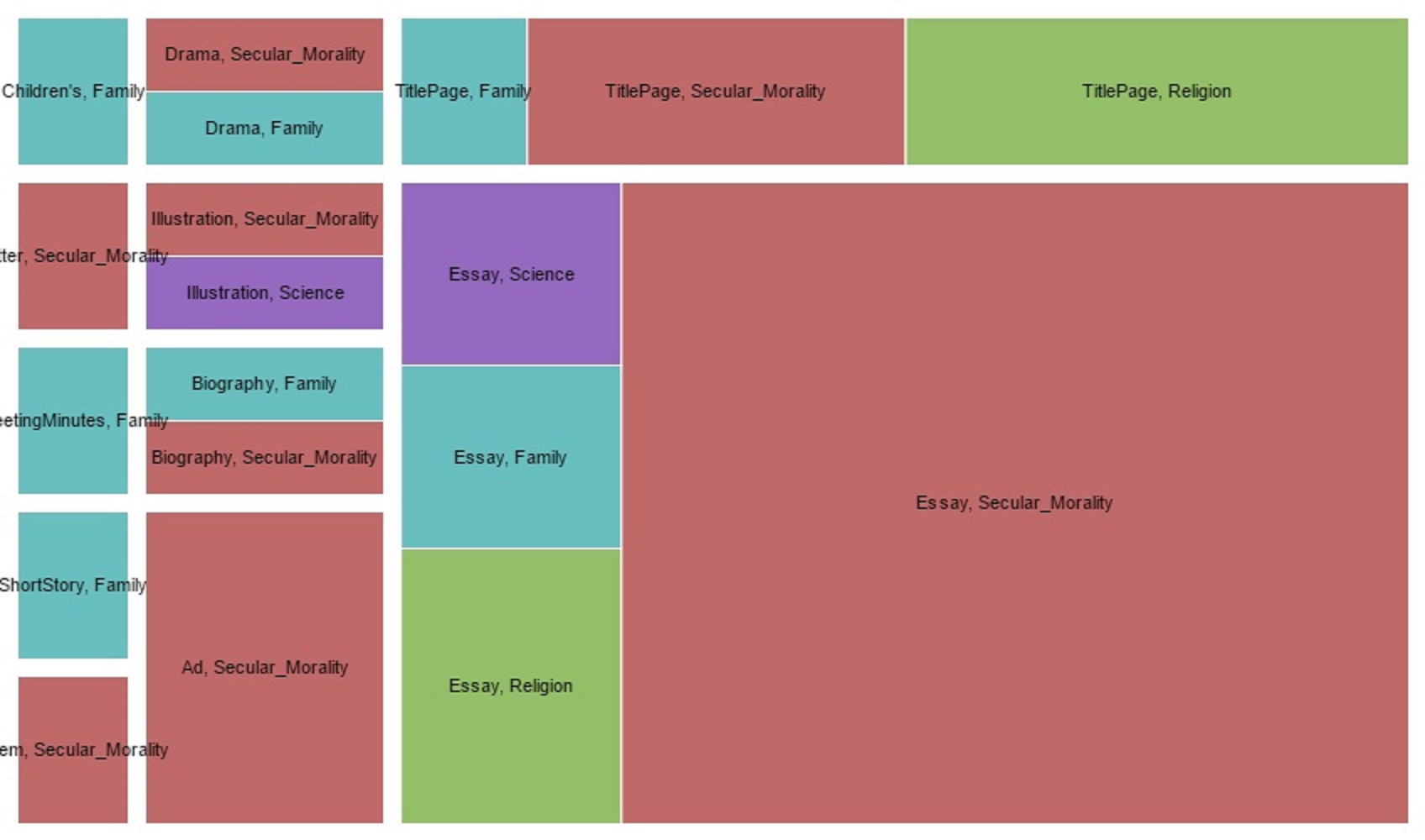This image graphically represents each piece of data in the Anti-Slavery Almanac data set, divided up by genre and rhetoric. Each issue of the Almanac contains a variety of types of literature, which are represented by the “genre” categorization, and each specific piece contains an underlying tone or central theme, as specified by the “rhetoric” categorization. The genre categories are as follows: title page, essay, ad, poem, drama, illustration, letter, meeting minutes, biography, and short story. The rhetoric categories are as follows: religion, secular morality, science, and family.
Our goal in examining these categorizations of our data set was to ascertain how different types of styles within The Anti-Slavery Almanac utilize different themes. Particularly, we were interested in the ways in which religion was used or used as a rhetorical strategy. The green sections in the graph represent the proportions of each genre that used religious rhetoric. This question was particularly interesting to our group as we read through our data set because we noticed religious themes underlying much of our data. We also know, from additional research, that the abolitionist movement had a highly religious core. We wanted to explore the presence of this theme in our particular data set.
Our most important takeaway from this examination of our data comes in the genre category of title page. Within this category, we found that half of all title pages in the data set contained explicit religious rhetoric. This in and of itself was not necessarily significant until we put this proportion in context with those of the other genres. Only one other genre, essays, contained any explicit religious rhetoric, and that proportion was far below the 50% seen in the title pages. The title pages in our data set seem to be specifically using religious rhetoric in order to draw readers into the Almanac. Within the Almanac, the most prominent rhetoric ties into the theme of secular morality, in which religion is not specifically mentioned, but underlying assumptions about what is right and wrong still exist.
These results are very significant in light of other research we have done outside our data set. Overall, we have found that religion was a central part of the framing of the abolitionist movement (Holcomb), but a variety of other factors were equally as central to the cause. Feminism had a large impact on the movement overall (Blackwell, Brown, Cowling, Cummins, Jennings, Turner), as did sectionalism (Canuel, Egerton, Gigantino, Guasco). In our exploratory research, we found that religion served as a gateway to many discussions surrounding slavery, but was not always in itself the most important part of the conversation at hand. We found that our data set, by utilizing religious rhetoric on its front pages, played into the same kind of style. The Anti-Slavery Almanac used religious rhetoric as a mechanism to grab the attention of its readers, but shifted its content more toward complex secular morality and other forms of rhetoric.

